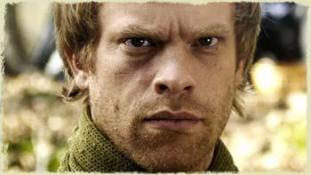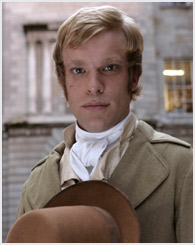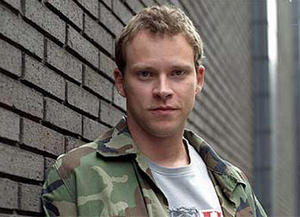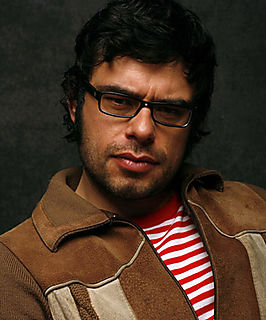My love affair with the Batman (or The Dark Knight to give him his more modern moniker) started, strangely, not within the bustling streets of some neo-metropolis but in the relative tranquility of Devon. I was eight years old and on a family holiday. We rented a house in the tiny village of Tipton St John (so small that it did not appear on any of the Ordinance Survey maps that we had brought along for the trip) and went sight seeing in such places of postcard beauty as Sidmouth, Ottery St Mary and Cricket St Thomas. Though very nice there was little there for me to be truly excited about. In fact, the only things that really stick out in my memory of the trip are the collection of the Readers Digest from the 1970s, buying a loaf of “toasting” bread and my brother, Simon, not only losing his recent purchase of a rare poster in a public toilet in Lyme Regis, but it still being there when he collected it later. The holiday was nice, fun, relaxing, but uneventful.
When driving back we decided to go to Exeter. Now, Exeter is not a city in the modern sense of the word, it’s more of a twee but large town that just happens to hold the cathedral that gives it city status. It has more in common with Ely or Canterbury than London or Manchester. While we were there, my brother, Paul, decided that we were going to go shopping and that he was going to buy me something for a fiver. Paul was the kind of brother that I loved and hated in equal measure. Once he told me that I was the “hardest” person in the world and then proceeded to beat me up, telling me that I wasn’t to cry because I was the hardest person in the world. But on other occasions he would buy me things, spend time with me when no-one else would and openly showed me his porn collection. This was one of those times.
As I was eight years old and clearly a man of the world, I decided that it was time to customise my bedroom and concluded that it was a poster I wanted. Paul told me that this was ideal, posters then (and still do) come in at under a fiver, so I was well away. To the nearest Our Price (RIP) we went quick smart. The posters on the whole did not do much for me. Too old for the cutesy cartoon ones and too young to understand the smut – there was nothing much on offer for me. Then one came into view that I simply had to have.
It showed a man dressed in black, standing next to an equally black car. The car was unlike anything that I had seen before, looking like the land speed record car, Thrust II, but infinitely more mysterious and sexy. The man in black was dressed with a cape and cowl. The cowl had ears on it, a ridiculous notion even for me at that age, but that didn’t matter. This man was the coolest thing that I had ever seen. I had to have it. Paul smiled and said “Oh, so you like Batman now do you?” and told me that there was loads of Batman around at the moment because there was a film coming out. I’d heard all I needed to. I bought the poster, which took pride of place on my wall.
The problem was that the Batman movie was certified a 12 certificate by the BBFC (the first ever film to be given the new rating, although I remember it being Gremlins 2) which meant that I had no chance of getting into the cinema to see it. Sure, I was a tall child, but not even I could pass for a child almost twice the age that I was. The hype surrounding the film was amazing. These days you seem to get this every summer when the next blockbuster comes out, but back then this was a new thing. Batman was everywhere, and I was loving it. The Lateshopper round the corner from my house even started stocking the fortnightly Batman comic, which I duly bought weekly (one to read and one to cut up and put on my wall in a mad DC Comics collage). It really didn’t matter that I wasn’t going to get to see the film any time soon. None of my friends were either, so all was well with the world.
In the October of 1989 I went on another family holiday, this time to Florida. This was more my kind of thing with theme parks and sunshine and crazy golf on a scale that Britain would have scarcely believed. In the Sunshine State I also bought a load of Batman collectors cards (that came with revolting chewing gum that one ate out of propriety rather than for enjoyment) which showed snapshots from the film. I was also bought, from my parents who were keen for me to have an interest, a making of the film book.
When I returned from this holiday I was the envy of all my friends because, although the Batman cards were available in Britain, they were substantially smaller than the ones that I had brought back from the states. However, my upper hand was quickly slapped away when my best friend, Chris, managed to get himself a pirate copy of the movie on video. This was something so great that it really didn’t matter who had what, it just mattered that we had it. The quality was terrible. In an age now where we can download high definition movies from the internet and pirating is as simple as ripping and burning to and from a media player, it is easy to forget just what pirates used to be like. Memories of my brothers trying to hook up two video players to record from one to the other and fusing the house out still sit in my memory. The Batman that we watched had a snowy picture that was bad even for video, sound that kept dipping in and out and a continual hiss that bore into your head like a subliminal message. But none of that mattered. We had seen the film that meant everything to us and we fucking loved it. Batman did not disappoint us.
Sadly the fad of Batman was pretty short lived. Within a year the posters had come down, to be replaced by Teenage Mutant Hero (or Ninja) Turtles, a god awful effort that combined mutant, ninja skilled turtles with crime in the rough back alleys of New York. But hey, I was young and impressionable then. But, unlike my friends, I kept believing in Batman as a hero and kept pining for more. Sadly for me, the only fix that I could get in the short time after the initial hype was the camp and really rather lame TV show from the 1960s. Sure, Batman was at least effeminate and at most, gay, the Joker was not scary and more of a prankster rather than a master criminal and Robin, well, was awful, it still kept the flames of excitement burning.
Unknown to me, in the years before the movie, Batman had been seen as a bit of a joke. In comic book circles he was regarded as an archetype for how superheroes simply should not be. Then came Frank Miller, whose comic series, The Dark Knight Returns, marked not only a return for Batman and made him more frightening and applicable to the cause and struggle of decent, hard working people than anyone before him. And, if Miller’s fantastic comic wasn’t enough to cement Batman’s reputation back into the forefront of the superhero alumni, then Alan Moore’s The Killing Joke did. Moore, possibly the most revered and influential of the modern day comic book writers, gave us the origin story of the Joker in a brilliant but brief story that provided enough inspiration for Tim Burton to make the Batman movie. My time was truly a great time to get into Batman.
Of course, at the time, non of this mattered a hoot to me. I was waiting with baited breath for the new Batman movie, Batman Returns, to be released. When I finally saw it I was both delighted and disappointed all at once. I thought that the places where Burton’s second movie were far darker and scarier than the original but I was in love with the Joker so it simply wasn’t as good. As if Batman movies mapped out my life, I then went to secondary school and forgot all about Batman for 3 years.
My parents separated when I was 14 and I spent a lot of time with my dad, who, though working abroad for a lot of the time, always made efforts for us to do things together when he was around. One of these things was a trip to the cinema to see the new Batman flick, Batman Forever. I was dubious but hopeful about this before going – I had by that time developed a knowledge of films and film-makers and knew that the change of a director could do huge things to a movie franchise. I thought at the time that Batman Forever was great, I loved the new, vibrant Gotham City, I thought that Two-Face was a villain that almost rivaled the Joker, I thought that Nicole Kidman was gorgeous and, although annoyed by his inclusion, empathised with Dick Grayson/Robin’s loss of parents and readjustment into another way of life. Looking back, my parent’s divorce probably gave me more in common with Robin than I then realised.
Of course, with my 25 years old hindsight I now know that the film is a stuffed turkey of a movie, a movie that, although better than its follow up, Batman and Robin, almost put Batman back in the doldrums laid out by 60s TV show. Yes, I thought that the look and gadgets were cool at the time, but they were totally in contradiction to what Batman stood for. After all, he is not known as The Neon Knight.
My interest in Batman waned after seeing Batman Forever. I have never seen (or will see) Batman and Robin on sheer principal and, having left school, been to college, loafed around and got myself a career, I didn’t seem to have a place in life for Batman. I had learned a lot about films and found my favourite era of movie to be the 1970s, where cities were socially dubious and grimy and the protagonists were all anti-heroes, trying to clean up the city in which they lived their way. I especially loved the movies Taxi Driver and Serpico. This is not to say that I lived in the past. One of the best films that I had seen in a long while was Memento, directed by British new hot-shot Christopher Nolan. To see a movie that was not about a character but about memory loss as a psychological condition was both refreshing and terrifying. Nolan was clearly a director to watch. He next movie, Insomnia, dealt again with what a lack of sleep will do to the mind rather than focus on character relationships and developments with equally (though more understated) consequences.
We were now in the new millennium. Some riveted by the new century, some pleased or disappointed that the world hadn’t come to an end, but most of us were bored. In this new millennium, film makers seemed to give the superhero a new lease of life. Sam Raimi’s take on Spiderman made $100 million dollars faster than any movie before it. Then 9/11 happened changing everything that we take for granted in our lives. And once again, the world felt like it needed heroes. Suddenly there was a plethora of these, all new sub-genre of movies. And they had some decent directors too, notably Bryan Singer (the wunderkind behind The Usual Suspects) and his take on the X-Men. Elsewhere there were films made of Daredevil, Blade (although the original was pre 2000), The Punisher, Hellboy and, more recently, Superman.
I was working as a Christmas Temp in HMV when I first heard of Batman Begins. Not all that surprisingly there were a few movie geeks that worked there and I fell in with them and we got to talking about superhero movies. Spiderman 2 had just come out on DVD and I said that, although I thought that the film was okay, Spiderman didn’t do anything for me as a superhero. Too clean cut. Too hormonal. Too keen to please his dead uncle. Allen, the then deputy manager, agreed with me. He said that the new Batman movie was going to be the one to watch. Ha, I thought, I’ve been burned before. But then he told me why it was going to be good. Firstly, it was to be a origin story and have no connection to any of the previous movies. And, more importantly, it was going to be directed by Christopher Nolan.
That night I remember having a rather one sided conversation with my girlfriend about how much I was looking forward to seeing the new Batman movie. But he’s not Spiderman, she had told me. But how did she know how I once felt about Batman? Especially with Christopher Nolan, the psychological director, in charge of proceedings. I was as excited about this as I was about any other film in my life, aside from Romy and Michelle’s High School Reunion when I had a massive crush on Lisa Kudrow. Things about the film just got better and better. Liam Neeson was going to be in it, as was Gary Oldman, playing Sergeant James Gordon. Even Michael Caine was in it, playing Alfred Pennyworth. Excitement grew even more when I discovered that Christian Bale was going to play Bruce Wayne/Batman. Forget all that sentimental stuff he did when a younger man (Little Women) – Christian Bale was hotting up to be one of the great action stars. He looked and acted right. The only problem was that he hadn’t actually been in anything all that good in an action role. Reign of Fire was okay, but nothing to write home about.
Batman Begins had so much potential that it was almost guaranteed to disappoint, mainly because no film can be that good. But I was wrong. Batman Begins was not only the best Batman movie by far at the time and the best superhero movie ever made but it’s one of the finest action adventure films of all time. Everything about the movie is more or less perfect. Nolan uses his gift of psychological direction to give the movie another disorder – phobia. Nolan skilfully remembers that Bruce Wayne does not love bats, in fact, he’s terrified of them, and it’s this fear that he manages to harness and draw strength from. It makes perfect sense that what scares the shit out of Bruce Wayne is going to paralysis anyone else with fear. Batman Begins also follows many of the long forgotten (or at least long ignored) sides of Wayne – he is a genius who crafts many of the gadgets himself, he has to act the foolish playboy in public so that people do not suspect him of being The Dark Knight. The movie also recognises that Batman is not a man but a symbol and pays homage to the group of people who keep this symbol alive. For the first time on screen we see Alfred as an equal rather than subordinate, we meet Lucious Fox of Wayne Enterprises and believe James Gordon to be a true friend, not foe of Batman.
I watched the film with such delight that when I finished watching it I sat and watched it again. Even sat here writing about it I feel an urge to put on it and enjoy it’s brilliance. My love affair with Batman was back on and it was stronger than ever.
The great thing was that I was, for the first time in my life, socially and financially free to pursue whatever interests that I had. Before, I had been very dismissive of graphic novels (thinking that the term graphic novel was very pretentious. I mean, they’re just comic books surely?) and would not have dreamed of admitting that I liked something as juvenile as a superhero. But then I figured that happiness never really grows up. I began reading the graphic novels/comic books that has been recommended to me by the good readers of Amamzon.co.uk and other relevant websites. The two works by Frank Miller that I read (Batman: The Dark Knight Returns and Batman: Year One) had a great effect on me and revealed Batman to not be the all conquering hard ass that I thought he had been previously, but being a vulnerable and insecure man who drives himself more on an unhealthy urge to validate himself rather than do the good of the people. I also read Jeph Loeb’s Long Halloween, which again gave a huge insight into Batman’s feelings of the city that he loves, and the criminals that he must encounter in it.
Yes, I had grown up. I managed to feel excited by The Dark Knight without having the need to sleep under a duvet with the Bat Symbol on it or eat my sandwiches from the Official Batman Lunchbox. And I’m quite happy with this. I am still in need of my heroes. I see the world as a scary place where no-one trusts anyone else and it’s seemingly only a matter of time until something terrible happens to the innocent. But I find comfort in the thought that there is this character, symbolically at least, who will always stare in the face of adversity and kick it in the teeth. That isn’t scared to do what needs to be done despite that moral and ethical ramifications . And who will always do the right thing. Despite being a grown up this still matters to me. Batman, you guided me when I was young and give me comfort now that I am older. I thank you and all that you stand for.







